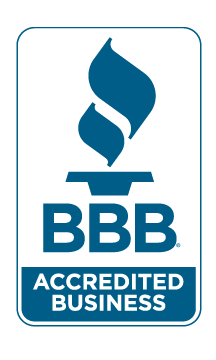In the world of independent life insurance sales, there’s one quality that separates long-term earners from short-term dabblers — and it’s not talent, charisma, or even product knowledge.
It’s consistency.
At Legacy Agent, we’ve seen firsthand that the agents who succeed aren’t always the ones with the most experience or the best connections. They’re the ones who keep showing up — week after week — refining their approach, learning from each contact, and building momentum through focused action.
This article is for any agent — whether you're brand new, returning after time off, or looking for a new home — who’s tired of hype and wants to build something sustainable. No fluff, no pressure, no contracts locking you down. Just clarity on what works and how we support it.
You Don’t Need to Be Perfect — Just Present
A lot of agents think they need to master everything before they can start. They hold back until they “feel ready,” which leads to hesitation, missed opportunities, and eventually burnout.
The truth?
You don’t need to be great to start. You just need to start — and then keep going.
The most successful agents didn’t come in knowing everything. They learned by doing. They built confidence by picking up the phone, following the system, and learning from real conversations.
Why Consistency Beats Talent
This business doesn’t reward energy in bursts — it rewards those who stay consistent. That doesn’t mean grinding 70 hours a week. It means protecting a few hours each week to connect with leads, follow up, and refine your sales flow.
At Legacy, we encourage agents to stay plugged in through biweekly or monthly touchpoints — but never with pressure. Instead, we focus on useful content:
- Case studies and success stories
- Objection-handling tips
- New lead promotions or underwriting updates
- Quick reminders to keep your pipeline full
It’s about adding value — not chasing quotas. That’s how you stay sharp, build confidence, and get paid.
Real Support Without Strings Attached
Legacy Agent was built differently — because most of us came from environments that made promises they didn’t keep. The kind of places that:
- Make you sign a long onboarding agreement before you can even quote
- Threaten your commissions if you try to leave
- Use “training” as a way to lock you into a one-way relationship
We don’t play that game.
At Legacy, we don’t make you sign an agreement just to start building your business. We don’t bury you in legalese to make you think you’ll be nothing without us. You’re already capable. You already have what it takes.
You shouldn’t need permission to be independent.
A Word of Caution: Read the Fine Print Before You Commit
We won’t name names — but some onboarding platforms or uplines require agents to sign detailed legal contracts before they’ve even written a single policy.
These agreements might sound harmless at first. But if you read the fine print, they may contain:
- Multi-year exclusivity clauses
- Commission clawback rights that only protect the company
- Non-solicitation or non-compete language that affects your ability to grow
If someone asks you to sign something before you’ve even been trained or paid — slow down and read it carefully. Ask yourself: What happens if I want to leave in 6 months? Am I locked in? Do I lose my book?
At Legacy Agent, we believe if someone needs to trap you into staying, that tells you everything you need to know.
Case Study: From Rusty to Rocking
Take Andrea — an agent in North Carolina who hadn’t written a policy in over a year. She was nervous and unsure if she still “had it.” We didn’t pressure her or make her sign a contract. We just helped her plug into the quoting tools and encouraged her to start with a few warm-up texts.
That month? She wrote three Final Expense apps and one Mortgage Protection case.
There was no magic. No sales gimmicks. Just support and steady execution.
What If You’re Stuck?
Every agent hits a slow patch. That doesn’t mean you’re not cut out for this — it means you’re human. When motivation dips, here’s what we recommend:
- Reconnect with your “why” — More freedom, income, time? Let that fuel you.
- Protect your time — Block hours in your calendar like it’s a real job (because it is).
- Talk to someone — We’re happy to help you troubleshoot what’s really holding you back.
You’re not alone — and you don’t have to figure it all out by yourself.
You Don’t Need a “System.” You Need a Partner.
We’re not trying to be the biggest IMO in the country. We’re building something better — a home for agents who want control, flexibility, and real support without the usual strings.
No lock-ins. No quotas. No contracts designed to keep you from growing.
Just honest mentorship, tools that work, and a path you can trust.
Final Thought: Start, Then Stay the Course
If you’ve been watching from the sidelines, waiting for the perfect time, this is your sign: start now — not perfectly, but consistently. The rest will come.
At Legacy Agent, we don’t just hand you tools and hope you figure it out. We walk with you, help you adjust, and keep showing up — because that’s what this business rewards.
You’re already great. Let’s help you prove it.
🚀 Ready to Start Without the Strings?
Visit Get Started to explore contracting options, or reach out directly for a no-pressure conversation. Whether you’re licensed, returning, or just curious — we’ll help you make the next right move for you.





